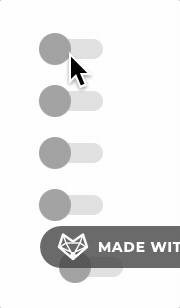I did not know whether to create an issue or just report here.
I noticed there are many ways to set up a widgets using a param, but they are not equal in terms of interactivity and layout. This can be confusing specially for people new to the ecosystem.
Let’s take a switch as an example, and create it in various ways.
import panel as pn
import param
pn.extension()
class Params(param.Parameterized):
enabled = param.Boolean(default=False)
p = Params()
pn.Column(pn.widgets.Switch(value=p.enabled), # 1. read once (makes sense, since we are setting a value)
pn.widgets.Switch(value=pn.bind(lambda v: v, p.param.enabled)), # 2. read but can not write
pn.widgets.Switch.from_param(p.param.enabled), # 3. read/write
pn.widgets.Switch(value=p.param.enabled), # 4. read but can not write?!
pn.Param(p.param.enabled, widgets={'enabled': {'widget_type': pn.widgets.Switch}}), # 5. read/write
)
Of these, I think 4 is the most surprising. I believe, however, that it is expected behavior and may actually change with Implement support for allowing Parameter references by philippjfr · Pull Request #843 · holoviz/param · GitHub , after which it will potentially become a read/write setup.
Second, it is a bit weird that the indentation is different for the last option.

I don’t have a specific ask other than a suggestion to maybe improve the docs, but I thought it may be helpful to share this as it may save someone some time.